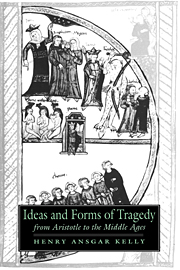2 - Modes and subjects of Roman tragedy
Published online by Cambridge University Press: 22 September 2009
Summary
In the first chapter, we looked primarily at theoretical questions of plot structure, generic content, and style, and only secondarily, or not at all, at the actual forms in which tragedy could appear, and the kinds of themes that it could deal with. Our interest in these latter questions must be focused upon the practices and opinions of late Roman Antiquity, for the Latin Empire was the principal channel of classical traditions to the medieval West.
WAYS OF PERFORMING TRAGEDY
When speaking of ancient tragedies nowadays, one tends to think only of the full-length dramas represented by the surviving plays of Aeschylus, Sophocles, and Euripides among the Greeks, and the ten Latin plays ascribed to Seneca the Younger. But by the beginning of the Christian era, the staging of such dramas seems to have become quite rare in the Roman world – though how rare is not clear. But poets continued to write full-scale tragedies, and probably never altogether gave up hope of seeing them produced in the old fashion. They could more optimistically have hoped that their plays would be excerpted or adapted for one of the other kinds of stage production that I shall detail below. But the sort of production that these poets could most clearly and confidently expect would be one organized and performed by themselves – namely, a public recitation.
- Type
- Chapter
- Information
- Publisher: Cambridge University PressPrint publication year: 1993



